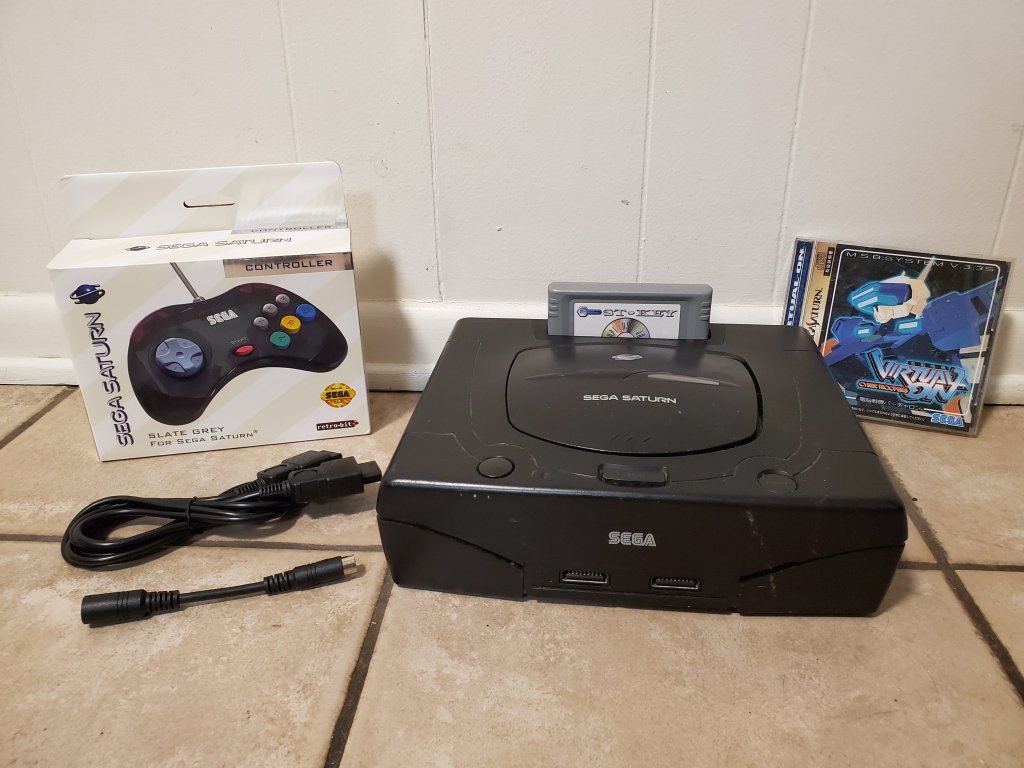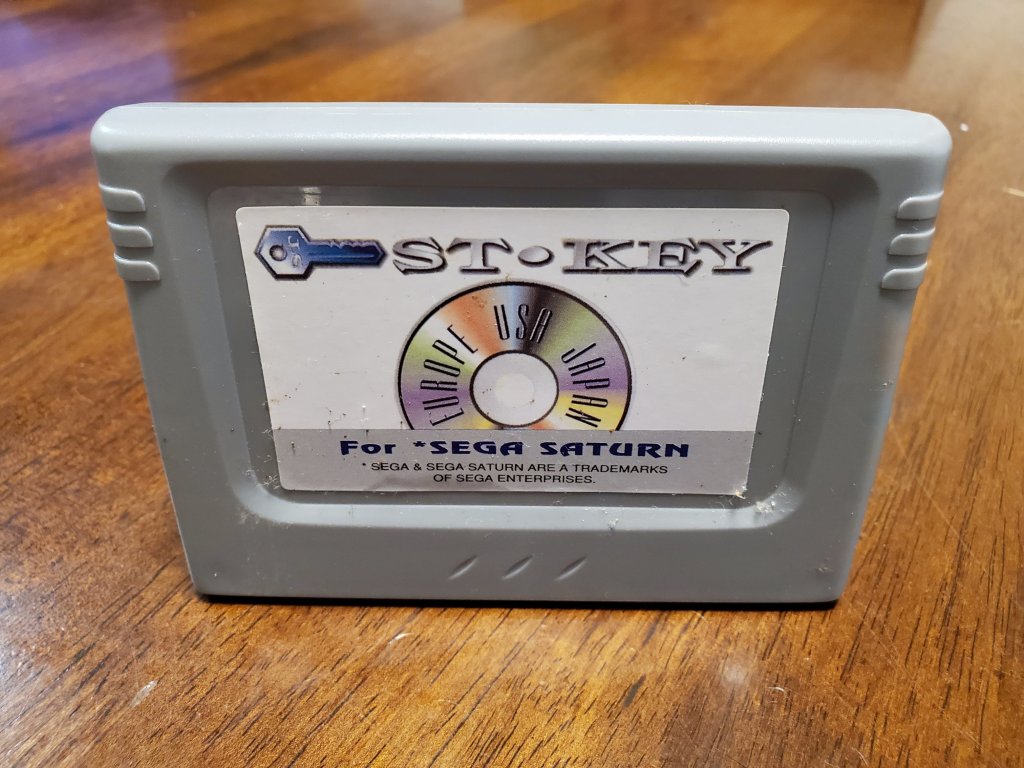Local Pickup
When I’m drinking my early morning (iced) coffee, I typically peruse the local Craigslist boards without much of notice for the majority of listings. I’m here looking for the big juicy deals that would really be worth my time, not any nonsense. Though I usually come up short, two ads caught my attention immediately, one for a pairing of Famicom games and the other for a console that I hadn’t had the chance to ever pick up and play, the Sega Saturn. The deal on both of these ads were phenomenal, and I quickly realized that they were from the same seller based on the matching floor and baseboards.
I reached out to the seller about both ads… and didn’t receive a response for nearly a week. Finally, we got connected and met up to complete the trade that evening (cool dude, btw). And like that, I had a Sega Saturn, an ST Key (to play import titles), and a Japanese copy of Virtual On. While I was at it, I also picked up one of the new Sega Saturn controllers by Retro-Bit and an HD Retrovision Saturn to Genesis adapter to pair with my existing Genesis component cable off of Castlemania Games.



I still need to do some cleaning up… 
History
Though the Saturn was a direct competitor to the Sony PlayStation 1, I never saw one in any of my friends’ living rooms back in the day. The Saturn never did well in the States, leading Sega to develop the Dreamcast not too long after. A big part of this was because of the complicated architecture of the Saturn and Sega’s lack of 3rd party developer interest (as well as their reliance on new arcade conversions instead of continuing franchises… and the list goes on). The Saturn was initially conceptualized as the next step in 2D graphics with a next-gen 2D processor and the speed to handle buckets of hardware sprites, but as word leaked of Sony’s new console which focused heavily on 3D graphics, Sega scrambled to combat the incoming threat.
Sega decided to keep their existing 2D graphics engine and tack on a new 3D processor/accelerator, splitting the workload two ways. This made the Saturn very powerful, very complicated, and very expensive. On top of that, Sega decided to keep many of their tools and techniques for working with the Saturn in-house and away from their 3rd party developers.
In the end, this meant that a Saturn never made its way into my neighborhood. So, this newly acquired Saturn would be the first for me to experience.
Gameplay
When I first turned on the console, I was excited to see those polygons fly up at the screen and form the Sega Saturn logo. Unfortunately, what I didn’t see was any indication of the ST Key being installed. Then, I was brought to the main start up screen which is very focused on playing music from CDs which I’m sure was a big deal back then. In fact, the experience of the media player is much cooler than the same on the Sony Playstation. I would have loved using the Saturn in my media center as a kid.
What it didn’t do, though, was play my one and only game, Virtual On. I figured it had to do with the ST Key. I cleaned it up as best as I could with a bit of IPA (Isopropyl Alcohol). Sure enough, I was greeted with an ST Key boot up screen after the Sega Saturn logo. Still though, Virtual On would not boot. It would just go into a weird loop after hitting the “Start Application” button and end up with a vague error.
I determined that the issue might have something to do with the state of the optical disc. Since cleaning with a soft microfiber rag wasn’t working, I decided to take it up to the Video Game Trading Post (one of my new favorite places in town) to have them run their specialty disc cleaning machine on my copy. And just like that, it worked like a charm! We’re in business.
Sam and I had a fun hour or so beating up robots (the 3rd one is particularly hard). The Saturn is definitely a unique console with a much different feel that the Playstation. Plus, it looked fantastic through my HD Retrovision component cable and Retrotink-2X. I can’t to get my hands on more games for the system to get more of that mid-90s experience!